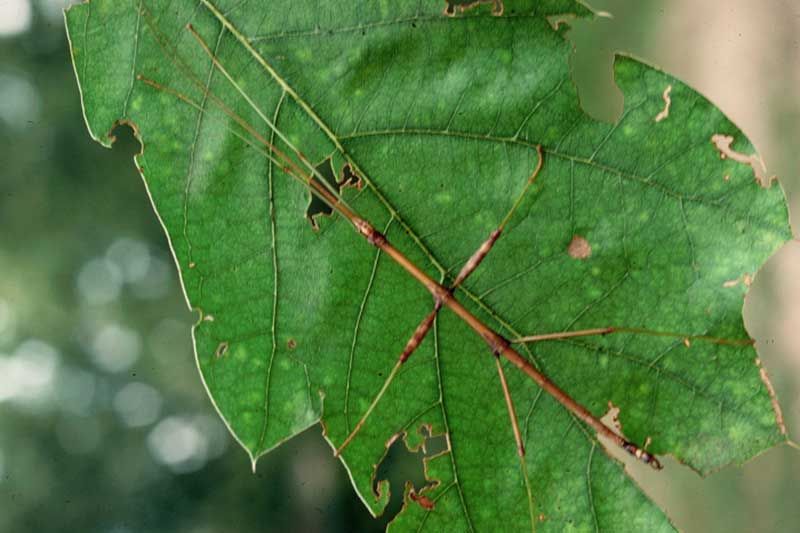Steve Blight | Oct 30, 2013
By Steve Blight
During the height of summer I saw a long, sticklike thing on my garage door, and approached it to get a much closer look. Sure enough, the thing had legs – 6 of them – antennae, and several other features usually found on insects. I had seen this fellow before (well, maybe not this exact individual, but a member of the species), and was able to identify it as a stickbug. I made a mental note that this could be the subject of an interesting column, and then got busy with other things. As summer progressed into fall, I thought my moment had gone, and that I should wait until next year to write about them when there was a better chance that readers might see one.
But I was wrong. Just last week, I saw another stick bug, this time on my window ledge. So despite the fact that the cold, wet weather of mid fall had arrived, Mr. (or Ms.) Stickbug was still out there trying to make a living. Time to write the column!
Because of its shape and remarkable resemblance to a small twig, this insect has earned a number of interesting names besides stickbug, including specter, stick insect, prairie alligator, devil's horse, witch's horse, devil's darning needle, thick-thighed walking-stick, or northern walkingstick. As far as I can tell, there is only one species of stickbug in our area, and it goes by the virtually unpronounceable scientific name of Diapheromera femorata
Adult stickbugs are about 2½ to 3½ inches long, the female usually being larger and thicker than the male. Both sexes are slender and wingless, with long, thin legs and antennae. Some adults are all brown or green, while others are mottled or multicolored with dark or light shades of grays, greens, reds, and browns.
Adult females lay eggs during late summer well into fall. The eggs fall from trees and overwinter in the forest leaf litter. Most eggs don’t hatch until the following spring, some 20 – 22 months after they were initially laid. Eggs hatch into small (about 1 centimeter) green nymphs, which proceed to begin feeding on shrubs and low vegetation. As the nymphs grow and age they move up into the trees to feed on the leaves of deciduous trees. Oak leaves are reported to be their preferred diet, but it seems that many other tree species (except maple, curiously) will do. In some areas stickbugs are reported to be major defoliators in years when numbers are high, but if this is the case in our area, I am not aware of it.
Stick bugs don’t seem particularly skittish. I have approached and even gently handled a number of these placid creatures. Apparently when alarmed, young nymphs either drop to the ground or make jerky, back-and-forth movements. Older nymphs and adults react by freezing in position, remaining still for long periods of time. They characteristically stand motionless with their front legs outstretched alongside the antennae, so that they look even more like twigs.
Stickbugs are fascinating creatures, and I was glad to have one last look before they disappear until next year.
Please feel free to report any observations to Lorraine Julien at This email address is being protected from spambots. You need JavaScript enabled to view it. or Steve Blight at This email address is being protected from spambots. You need JavaScript enabled to view it.
More Stories
- Province clarifies stance - Says Private Well Water Testing Will Continue
- Frontenac County Stays Internal for CAO - Appoints Kevin Farrell
- Addington Highlands Tax Bill Going Up 6.93%
- Perth Road United Church Donation to The Grace Centre
- 21 Years Of Dump Life Left At South Frontenac Waste Site
- Eclipse 2024 – Once In A Lifetime
- National Tourism Week
- NeLL Spring Open House and Anniversary Concert
- 25 years at Bishop Lake Outdoor Centre
- Grounds Contracts Down, Custodial Contracts Up In Central Frontenac

